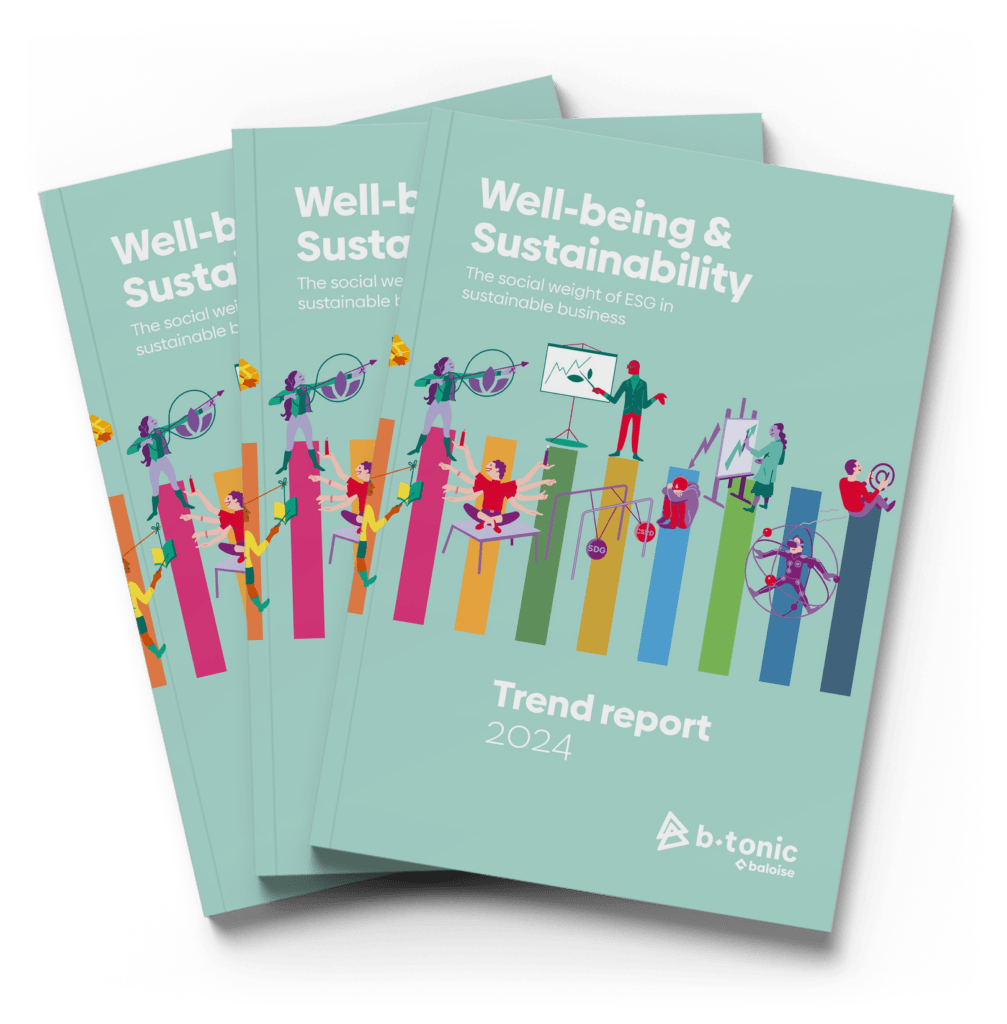The Importance of Double Materiality
The Corporate Sustainability Reporting Directive (CSRD) is currently a topical and relevant issue that is receiving significant attention from organizations. With the emergence of the CSRD, companies are now encouraged to excel in their sustainability efforts. However, to produce such an impressive sustainability report, companies must conduct a double materiality analysis during the preparation phase.
What is double materiality?
Double materiality is a concept that helps determine whether certain sustainability topics or information should be included in a company’s sustainability report.
Double materiality refers to the extent to which information is relevant and can impact the decisions of users For ESG reporting, materiality means that the reported information is significant enough to influence the decisions of stakeholders, such as investors, customers, employees, and other involved parties.
The CSRD requires companies to report according to the principle of ‘double materiality’. They must report on the financial impact of ecological or social factors that pose a risk to the company, known as ‘financial materiality’. In layman’s terms: about how external sustainability factors from ‘outside to inside’ impact their performance, position, and development. On the other hand, they must report on the impact of their own activities on society, people, and the environment (from inside to outside), known as ‘impact materiality’.

Financial materiality and impact materiality.
-
Financial materiality analyzes how changes in the world affect the activities of your organization. For example, if your company heavily relies on human labor, changes in this aspect can bring both opportunities and risks. These changes can impact your company’s income and expenses, as well as the availability of financing options.
-
Impact materiality focuses on how your organization affects others, such as people and the environment. This includes not only what your company does itself, but also the effects of everything it interacts with, such as suppliers and partners. Both service-oriented companies and product manufacturing companies have an impact in this regard. Through this impact analysis, a company can identify areas of improvement and strengths. Organizations should consider not only their own actions but also the entire supply chain for production or service delivery. This way, they can gain a more comprehensive understanding of the impact of their business.
How do you determine the relevance of ESG themes?
To determine the relevance of an ESG theme for both the organization and stakeholders, it needs to be assessed from both the impact and financial perspectives. Let’s take, for example, a company discovering that some of its factories do not provide adequate working conditions for employees. This can be viewed from two perspectives. Firstly, from the perspective of the employees and their well-being. Secondly, from the perspective of the company itself and how it may impact their reputation and ultimately their finances.
If the company realizes that improving working conditions is not only relevant to the people directly affected by it (the employees). But also for how the company is perceived by customers, investors, and even regulatory agencies, then this ESG theme passes the test of double materiality.
This means that the company should report on this matter, so that everyone stays informed about the efforts the company is making to treat employees fairly. This not only enhances the reputation but also the financial stability of the company. When investors see active efforts towards improvements, they may be more inclined to invest, ultimately strengthening the long-term value of the company.
ESRS standards
The data collection for the double materiality analysis is aligned with the European Sustainability Reporting Standards (ESRS). These standards have been developed to guide companies in complement to the CSRD directive.
They provide detailed guidelines for collecting, reporting, and verifying sustainability data, enabling companies to report on their sustainability performance in a standardized and comparable manner. By reporting according to the ESRS, companies can not only comply with regulatory requirements but also meet the expectations of stakeholders such as investors, customers, and regulatory authorities.
To effectively apply the ESRS, companies must first identify the relevant standards applicable to their business activities and reporting requirements. Subsequently, they need to collect and analyze the necessary data to meet the requirements of these standards.
ESRS framework
The ESRS comprise two main standards (ESRS 1 and ESRS 2) and ten standards that are subdivided into the categories Environment, Social, and Governance (ESG). Companies are required to report according to the general requirements of both ESRS 1 and ESRS 2. For instance, every company must report on ESRS S1, which discusses the importance of the organization’s own employees. It requires companies to clearly communicate about the well-being and working conditions of their employees, shifting the focus not only on the environment but also on the human side of the business. Let’s be honest, who wouldn’t want to work for a company that treats its employees well?
By actively fostering an inclusive work environment and transparently communicating about efforts and outcomes, HR can attract and retain new talent while reinforcing the overall sustainability efforts of the company.

Relevance for Companies and Stakeholders
You might be wondering why double materiality is relevant for your co Here are a few reasons why this concept is becoming increasingly important in the modern business world:
Risk Management: Embracing both internal and external materiality allows companies to better manage risks stemming from both financial and non-financial factors. This helps them adapt to changing market conditions and minimize potential threats to their reputation.
Reputation and Trust: Demonstrating engagement with social and environmental issues can increase consumer trust and strengthen a company’s reputation. More and more consumers prefer companies that not only make profits but also have a positive impact on the world.
Future-proofing: By integrating sustainability into their business strategies, companies can better position themselves for the future. This involves identifying new opportunities for growth and innovation, as well as reducing their ecological footprint to comply with increasingly stringent regulations.
Double materiality is more than just a reporting guideline; it’s an essential practice for companies looking to fully understand and manage their impact. As the world places more emphasis on sustainability, the importance of robust double materiality will only increase.
Would you like to discover the impact of double materiality on your business? Contact us today for a personalized consultation.





